Messages of hope and action, wide pedestrian streets, even carnival-like climate games: Dubai’s massive Expo City greeted us with grandeur as we entered the zone of the 28th Conference of Parties (COP), the annual climate summit where global-scale decisions are made.
I had the privilege of attending my first COP as part of the Earth Observatory of Singapore’s Community Engagement team, and I was thoroughly inspired by many practitioners committed to resolving the climate crisis. Amidst recognition of our progress, it was also a sobering but welcome reminder of how much more needs to be done. I was reminded that combating climate change demands a collaborative, all-inclusive approach.
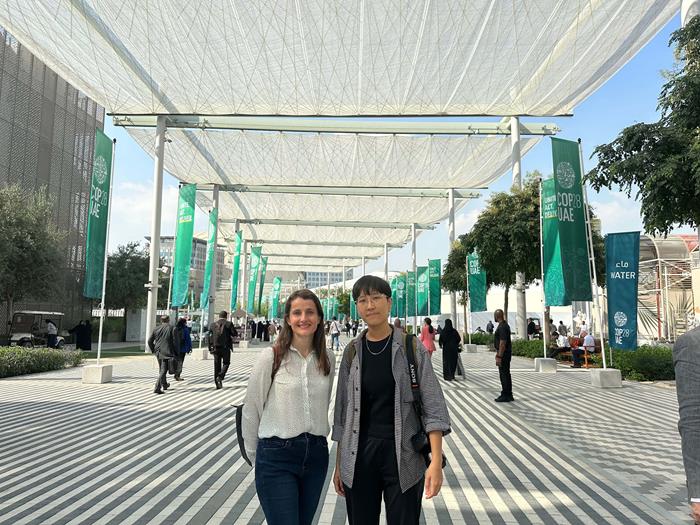
Members of the EOS Community Engagement team attended COP28: Lauriane Chardot (left), Jay Wong (right) (Source: Earth Observatory of Singapore)
This gathering was a powerful reminder that climate change is a challenge that transcends boundaries, and that everyone has a role to play. Policymakers, scientists, NGOs, businesses, and students all converged to address the escalating climate crisis. This spirit of unity and cooperation was palpable not just in the Blue Zone, reserved for accredited delegates, but also in the Green Zone, which witnessed enthusiastic public attendance, including numerous young school-goers.
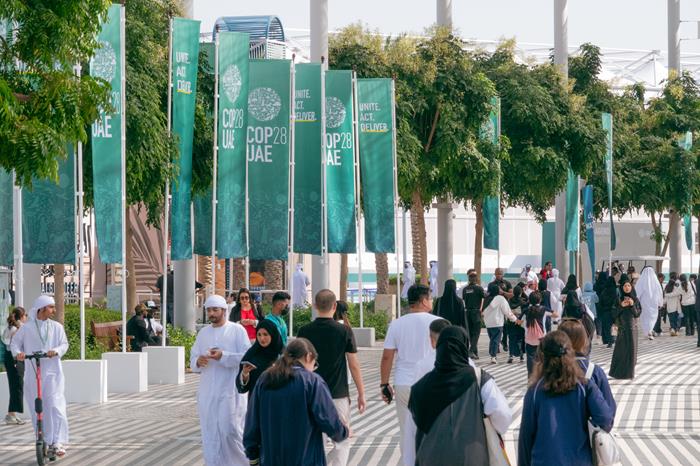
People from all sectors of society gathered in the Green and Blue zones to address the climate crisis (Source: Jay Wong/Earth Observatory of Singapore)
The need to bring all sectors of society to share and find solutions across all disciplines affirmed the importance of interdisciplinary research at EOS. The Climate Transformation Programme, for instance, brings together different disciplines from the physical and social sciences to study climate extremes, the interlinks with biodiversity, health and the finance sectors, and what could be mitigation and adaptation solutions, while leveraging AI, remote sensing, and the communication of findings with different stakeholders. Other examples include the SouthEast Asia SEA level programme which brings together scientists from different disciplines to better estimate sea-level projections in the region, and the EOS project under the National Sea Level Programme which looks at the effect of land subsidence on sea-level rise. Such programmes stand as a testament to EOS’ commitment to foster collaborative research and solutions for climate resilience. These programmes promise to bring much to the discussion of climate mitigation and adaptation in Singapore and Southeast Asia.
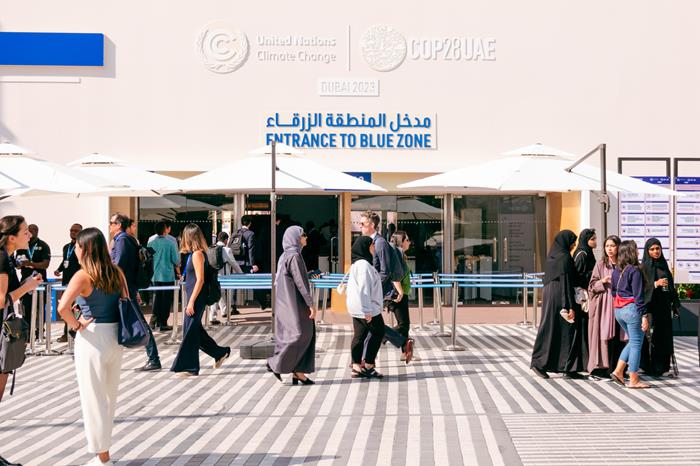
The Blue zone is where the negotiations take place (Source: Jay Wong/Earth Observatory of Singapore)
The COP28 discussions highlighted a crucial aspect of climate action: inclusivity. The Women’s Pavilion and the Humanitarian Hub offered profound insights into the disproportionate impacts of climate change on regions and communities already grappling with vulnerabilities related to food insecurity and conflict. Several sessions underscored the importance of tailoring policy decisions and actions to the realities on the ground. This perspective is deeply embedded in EOS's work. It for example reflects some of Assistant Professor David Lallemant's research on disaster risk reduction which focuses on understanding and mitigating risks in the most vulnerable communities, while ensuring that our scientific endeavours translate into meaningful, equitable impacts.

Moderator and panellist of the session ‘A post 1.5 world: Science, policy and humanitarian action on overshoot’, held on 8 December 2023 in the Humanitarian Hub (Source: Lauriane Chardot/Earth Observatory of Singapore)
COP was a good opportunity to stay abreast with the global conversation, and the sustainability efforts across all sectors showed the vast opportunities to build more resilient societies. These reminded how relevant is the EOS mission to study natural hazards and climate change for safer and more sustainable societies. And how important it is that we are part of the discussion, and that we build the capacity of earth scientists and students to be part of the solution.
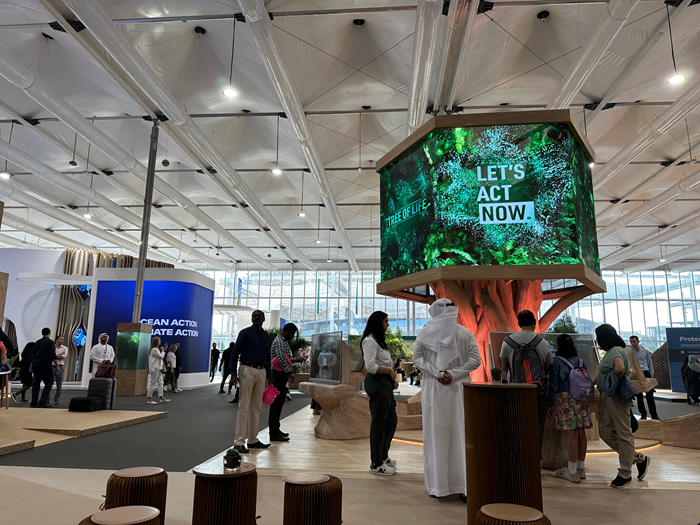
Messages of hope and action were clearly visible in many parts of the Green Zone, including here in the Energy Transition Hub (Source: Lauriane Chardot/Earth Observatory of Singapore)
Even as we work through competing priorities in negotiations, we must see that climate action will collectively move us towards a brighter future. In that spirit, the work that we do at EOS, and more broadly at NTU, are aligned with global efforts. We are looking forward to contributing even more in the years to come.
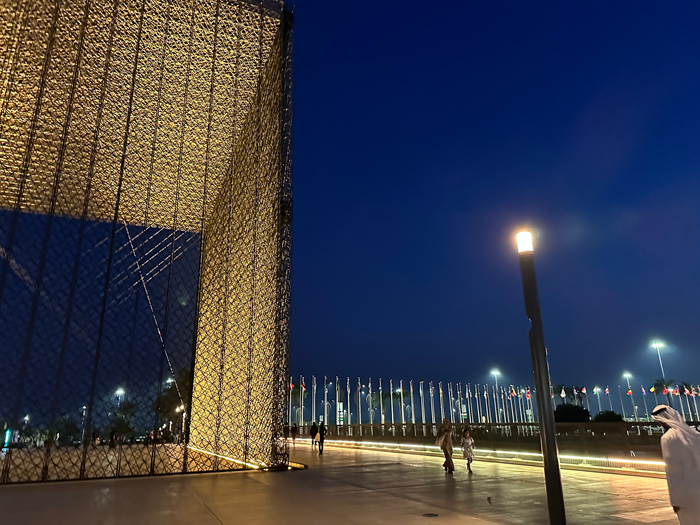
After exiting through the Sustainability Gate (Source: Lauriane Chardot/Earth Observatory of Singapore)